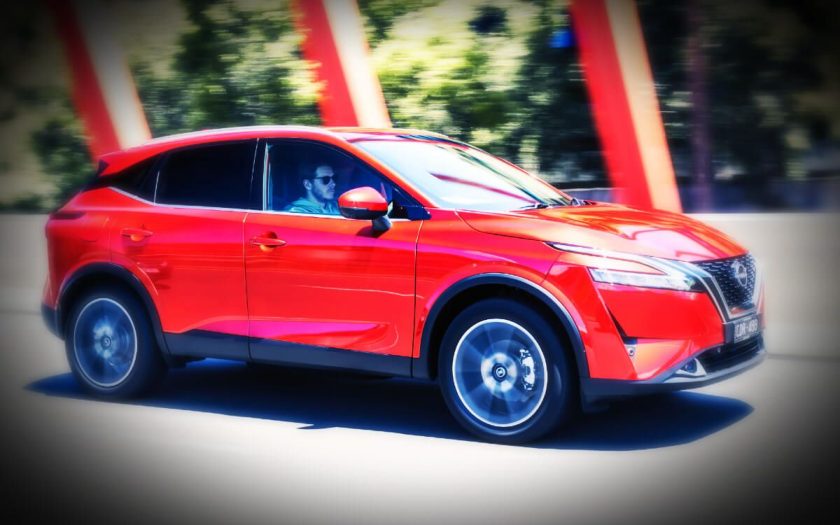Chris Riley tests the 2024 Nissan Qashqai small SUV with pricing, specs, ride and handling, safety, verdict and everything the over-50 driver needs to know.
Summary: Nissan’s new Qashqai slots between the Juke and the X-Trail, making it a far more practical option. Of course, the price has gone up.
2024 Nissan Qashqai small SUV
Pricing: $42,190 (plus on road costs) That’s $7590 over the outgoing ST-L
Options: premium paint $700
Warranty: Five-years, unlimited km, including roadside assist
Safety: 5-star ANCAP (2021)
Build location: United Kingdom Yes, they do still build cars!
Engine: inline 1.3-litre turbo intercooled four-cylinder petrol Replaces the 2-litre
Power: 110kW @ 5500rpm
Torque: 250Nm @3750rpm
Transmission: automatic, CVT, front-wheel drive
Body: 4425mm (long); 1835mm (wide); 1445mm (high)
Kerb weight: 1482kg
Ground clearance: 180mm
Braked towing capacity: 1500 kg
Boot capacity: 504 litres
Wheels: 19-inch alloy
Tyres: 235/50 R19
Spare wheel: space saver
Turning circle: 11.1m
Fuel tank: 55 litres
Official consumption: 6.1L/100km (premium 95 unleaded)
Consumption on test: 7.2L/100km (400km)
seniordriver consumption on test: 6.7L/100km (497km)
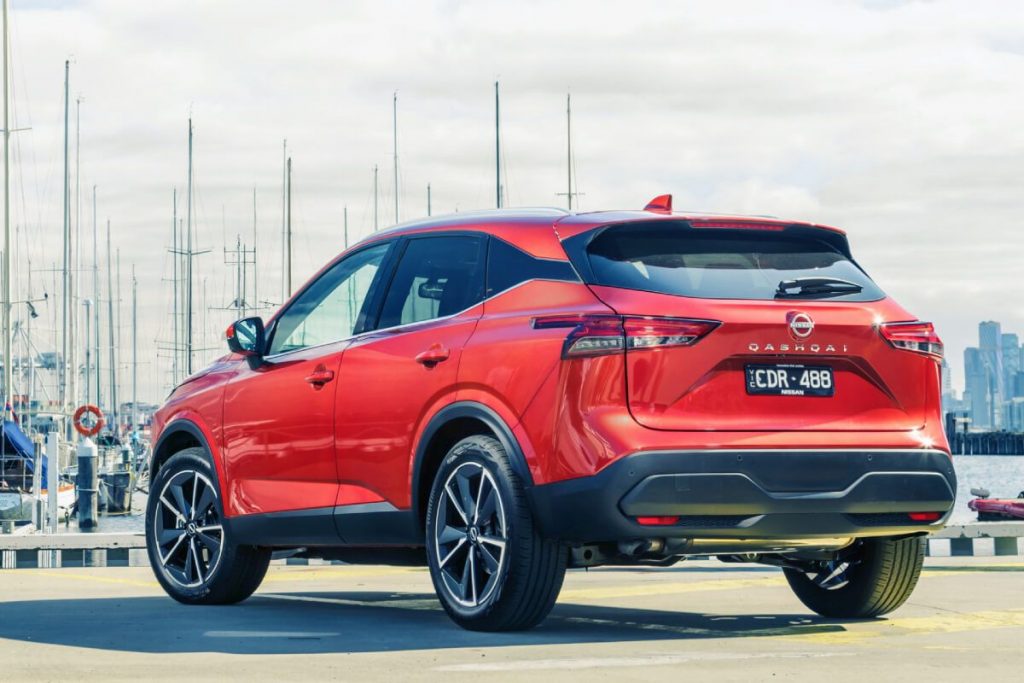
[review]
Once known as Dualis, Nissan’s small SUV the Qashqai has grown in size and stature over the years.
Sitting between the Juke and X-Trail in terms of size, the current, third generation Qashqai was launched in 2021.
It’s 60kg lighter than before, stands taller, longer and wider, and has a longer wheelbase – and of course costs more.
That means more room for luggage, and more knee and leg room for rear seat passengers. What’s not to like?
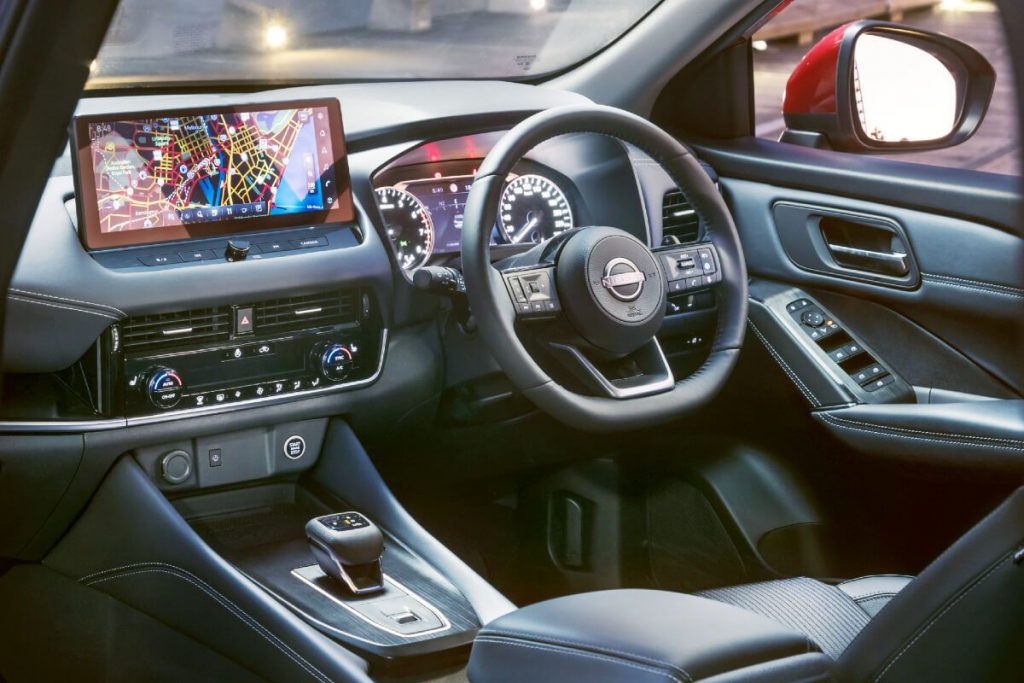
What’s it cost?
The latest, third generation Qashqai comes in four grades: ST, ST+, ST-L and Ti, priced from $33,890 to $47,390.
Premium paint adds $700, while five two-tone colour combinations options are also available.
They are all powered by the same turbocharged petrol engine, but will soon by joined by an e-Power hybrid model, priced from $51,590 – $4200 more than the Ti.
Our test vehicle was the ST-L priced from $42,190.
Standard kit includes 19-inch wheels, combination cloth and artificial leather trim, two-zone climate control with rear air vents and an eight-way power-adjust driver’s seat with lumbar control.
The front seats are also heated and so is the steering wheel, but alas there’s no cooling for the seats. That goes for all grades. (Hello? Aussies do not need heated seats.)
Other equipment includes push-button start, electronic park brake with auto hold, automatic lights and wipers, auto dimming mirror, auto folding door mirrors, front and rear parking sensors, adaptive cruise control, auto-levelling adaptive LED headlights plus LED tail and daytime running lights.
Infotainment consists of a large (for a vehicle this size) 12.3-inch touchscreen that supports Bluetooth, voice control, AM/FM and digital radio, satellite navigation, traffic sign recognition, wired Android Auto and wireless Apple CarPlay plus standard six-spear audio.
There’s wireless charging and USB A+C ports in the front and back (rear are charge only) and 12-volt outlets in the front and luggage area.
Five-star safety includes seven airbags (front, side and curtain airbags, plus a centre airbag in the front) and a surround view monitor with moving object detection for parking.
Autonomous emergency braking (Car-to-Car, Vulnerable Road User, Junction Assist and Backover) as well as a lane support system with lane keep assist (LKA), lane departure warning (LDW) and emergency lane keeping (ELK), and an advanced speed assistance system (SAS) are also standard.
Qashqai is covered by a 5-year unlimited kilometre warranty with roadside assistance for the same period.
Service is due every 12 months or 15,000km.
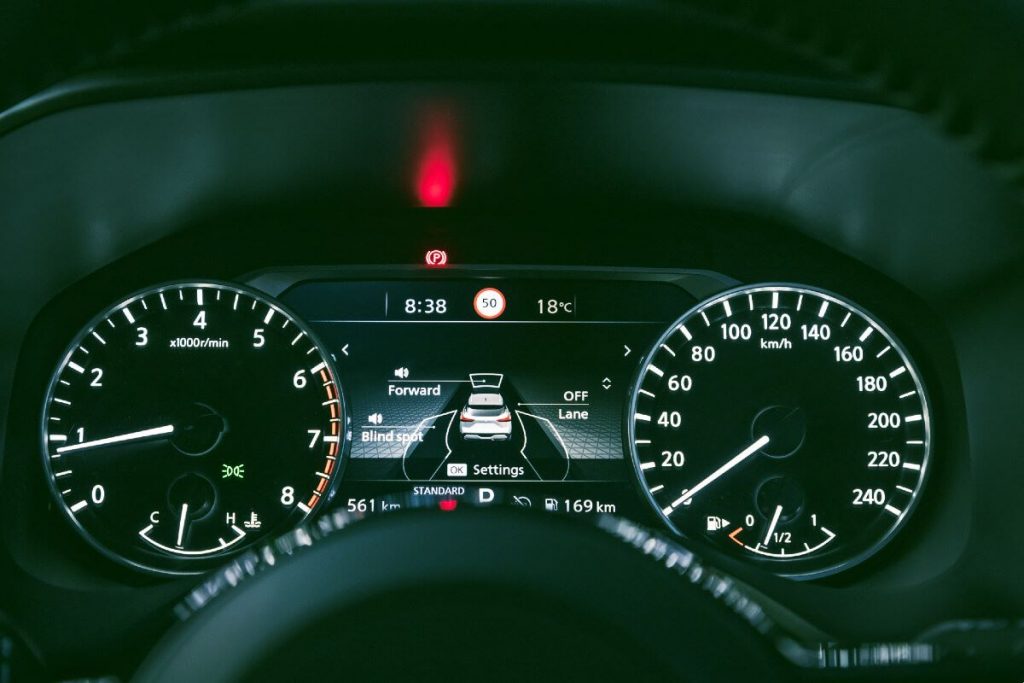
What’s it go like?
The last time I drove Qashqai it was powered by a 2.0-litre naturally aspirated engine.
This time around our ST-L tester is powered by a 1.3 litre four-cylinder turbocharged petrol engine that generates 110kW of power and 250Nm of torque, the latter from 1600-3750 rpm.
Drive is to the front wheels through a CVT-style automatic.
The transmission incorporates auto engine stop-start, with Standard, Sport and Eco drive modes plus steering wheel-mounted gear change paddles for accessing the seven steps or simulated gears.
A stiffer chassis and more sophisticated multi-link rear suspension promises better ride and handling.
Bonnet, doors and front guards are made of aluminium to save weight, while the tailgate is made from composites and saves 2.3kg.
With a 55-litre tank, fuel consumption is a claimed 6.1L/100km and premium 95 unleaded is recommended.

The cabin feels more upmarket, is reasonably spacious and unexpectedly comfortable, and caters to our preference for cloth rather than sticky leather under our backside.
There’s 15mm more headroom, 28mm more knee room in the rear than before which helps to elevate the experience, with USB A + C charge ports provided for front and rear passengers.
The rear doors open almost 90 degrees, making it easier for parents to get kids in and out of car seats.
Bottle holders in the front doors are large enough to accommodate larger drink bottles.
The rear tailgate has grown a pointy ridge which in part explains the larger luggage capacity; 429 litres in this grade.
The ST-L misses out on a full-blown digital instrument cluster, but the analogue dials are large and easy to read, with a small digital info panel between them for detail.
The touchscreen is easy to operate and you don’t need to go digging for the aircon controls, with real knobs at your fingertips.
The overall effect is snug and avoids the lit-up look of a Christmas tree that some cars have. It will appeal to easily-intimidated mature buyers.
Performance is perky, even a little livelier than we remember thanks to a bit more torque, but there’s an initial pause as the turbo spools up.
It’s a little disconcerting, especially when you’re trying to punch through a hole in the traffic, but apart from that Qashqai gets along pretty well and doesn’t use very much fuel.
In manual mode, in sixth or seventh gear, you can hit the accelerator and absolutely nothing happens. It just sits there.
The low-profile transmission lever is a snack to use as are the gear shift paddles.
For a CVT it’s surprisingly quiet and refined, avoiding the zoominess that plagued Nissan’s earlier efforts.
Some people could find the ride a bit firm, but it depends largely on the roads you travel.
Handling within the constraints of its target market is safe and predictable.
We were getting 7.2L/100km after close to 400km of mixed driving.
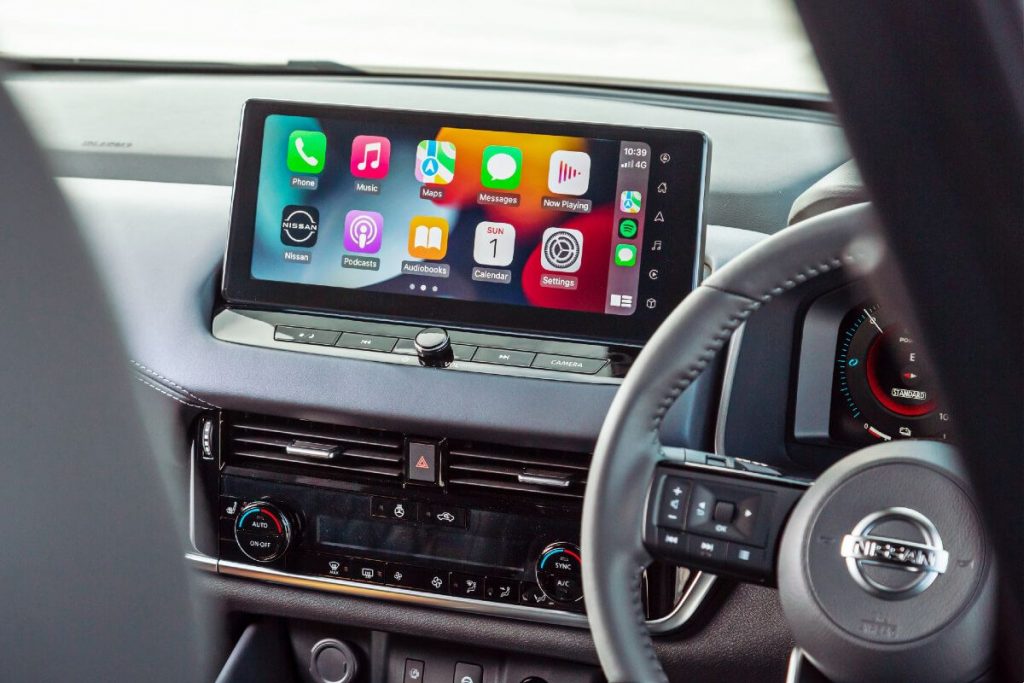
What we like
- Spacious cabin
- Comfortable seats
- Doesn’t use much fuel
What we don’t like
- Turbo lag
- Tricky cruise control
What over-50 drivers need to know
Qashqai has really matured since its days as a Dualis.
It’s a larger, solid offering that doesn’t want for much, especially in ST-L form.
It’s got the higher ride height valued by mature drivers and is easy to drive and operate, with a dash that is not too confronting.
Any shortcomings such as the turbo lag are not deal breakers, but can be irritating at times.
There will be many buyers looking to this car as a cheaper option than the X-Trail which continues to grow in size and price.
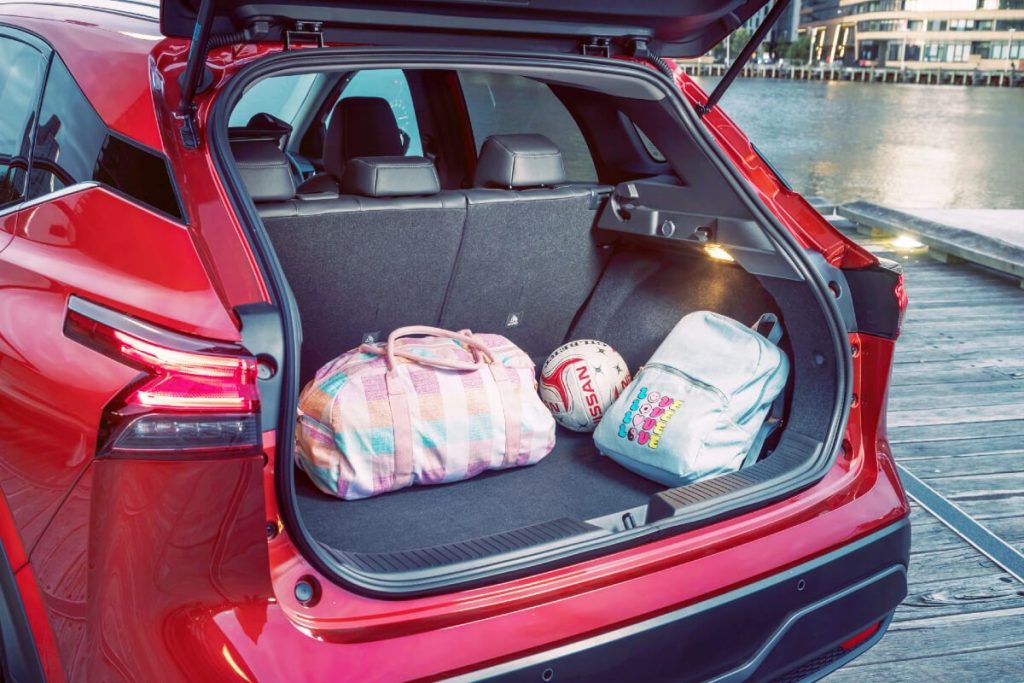
seniordriver comments
The Nissan Qashqai might be bigger than it used to be, but slotting in, as it does, between the Juke and X-Trail, many intending buyers will find it to be the ideal size.
While the upcoming hybrid model is perhaps the pick of the bunch, the rather steep price of $51,590 will dissuade many people. However, the good news is that the standard non-hybrid model is pretty economical.
The stiffer chassis and multi-link rear suspension certainly do deliver a batter ride and handling, but we found a worrying tendency to aquaplane. And the steering assist turns itself off when the camera can’t see the way ahead, which happens worryingly often in wet conditions.
Wide opening rear doors are being fitted to more cars and are a boon if you have to install car seats or transport elderly rear seat passengers. Just be careful in carparks, though; the ever-shrinking allocated space means there is a real risk of opening a door into a car in an adjacent space.
Real knobs for the air conditioner are a welcome inclusion.
